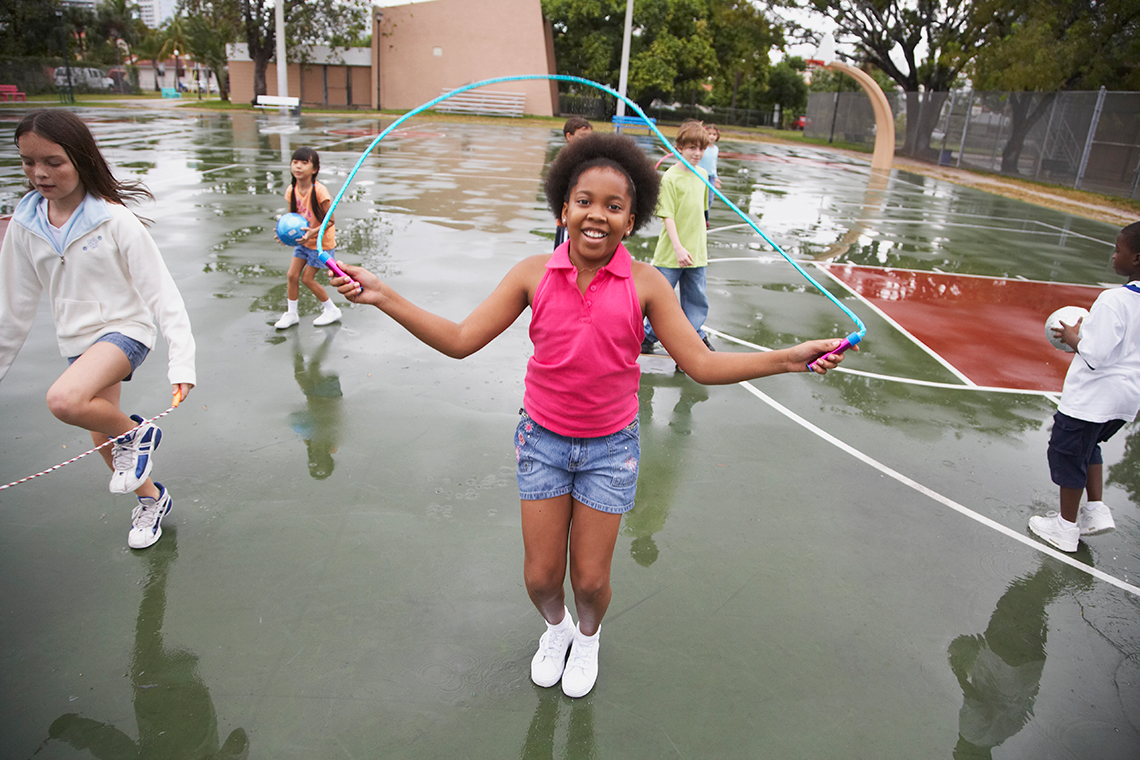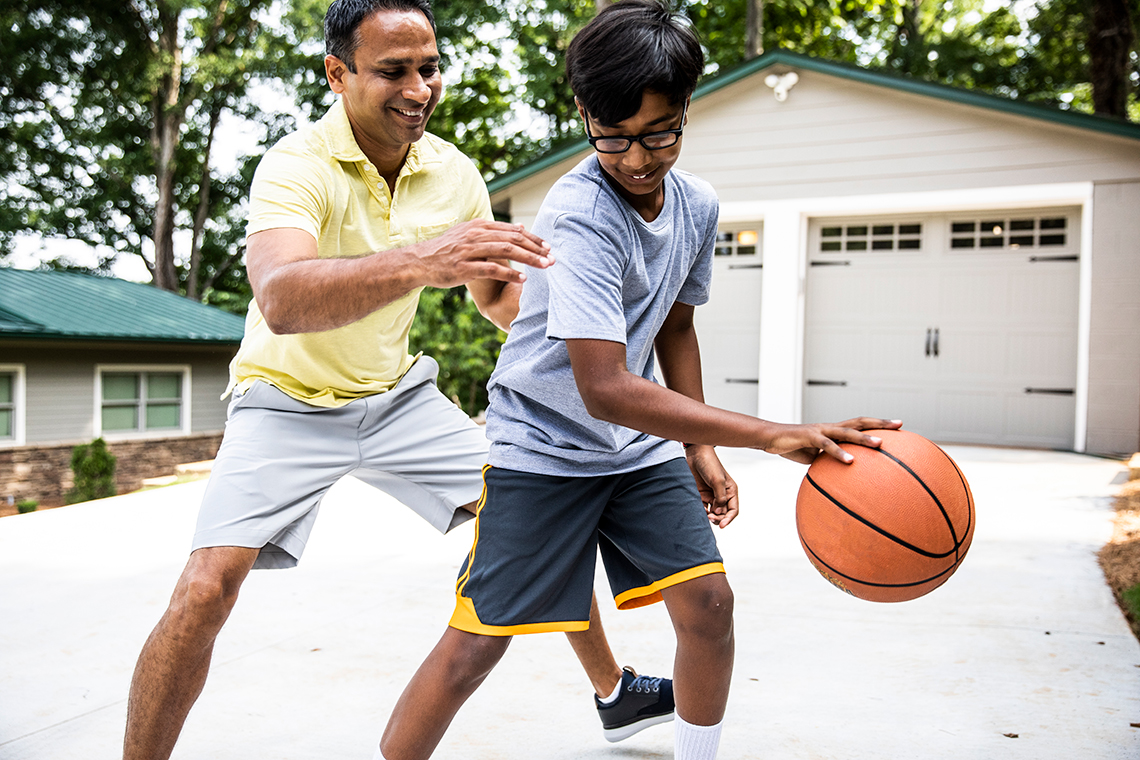Minds On
Jump up, jump up, and get down
Jumping is used in many different sports and activities.
Explore the following images. For each image, think about what kinds of jumps are required to complete the activity. Are they jumps for distance? Are they jumps for height?
Record your answers in a method of your choice.
Brainstorm
Jumping for joy
When do people use jumping for recreation? How about during their everyday activities?
Brainstorm a few possible answers and record them in a method of your choice.
Action
Jump around
Jumping is sometimes used in sports when measuring a person’s strength, agility, and power. For example, the National Football League (NFL) in the U.S. uses a vertical jump and bench press, sprint, and agility tests to evaluate their players.
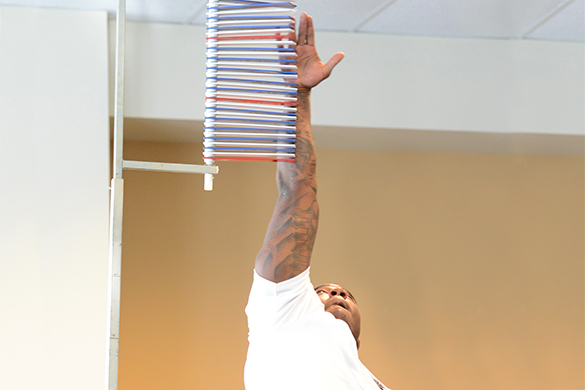
In this activity, you will be exploring various types of jumps, like the horizonal jump, hopping, and skipping.
What is jumping?

A jump is considered a movement that involves taking off and landing. The movement includes a takeoff, a flight, and a landing phase. Jumping is a skill that we use in many different activities.
Before you begin learning and attempting these movements, it’s important you gather the proper equipment and do your safety check.
Materials Needed
Materials needed
If possible, the circuits should be done with the following equipment:
- rope, tape, or something to jump over
Safety
Before you begin, consider these safety precautions:
Warm Up
Warm up
Let’s warm up by exploring the jump. Find an open space and lay your rope or other marker down in a straight line.
Set a goal
Your goal is to jump over your chosen object and land on the other side of it. A good jump involves landing on the balls of your feet and with control.

You may use any type of jumping for this warm up or try these suggestions:
- jump with two feet and land on one
- jump with one foot and land on two
- jump as high as you can
- jump as far as you can from one end of the rope towards the other end
Pause Reflect
Jumping thoughts
Reflect on the following questions:
- Which jumping technique did you choose? Why?
- What did you notice between the different jumping suggestions?
Horizontal jump
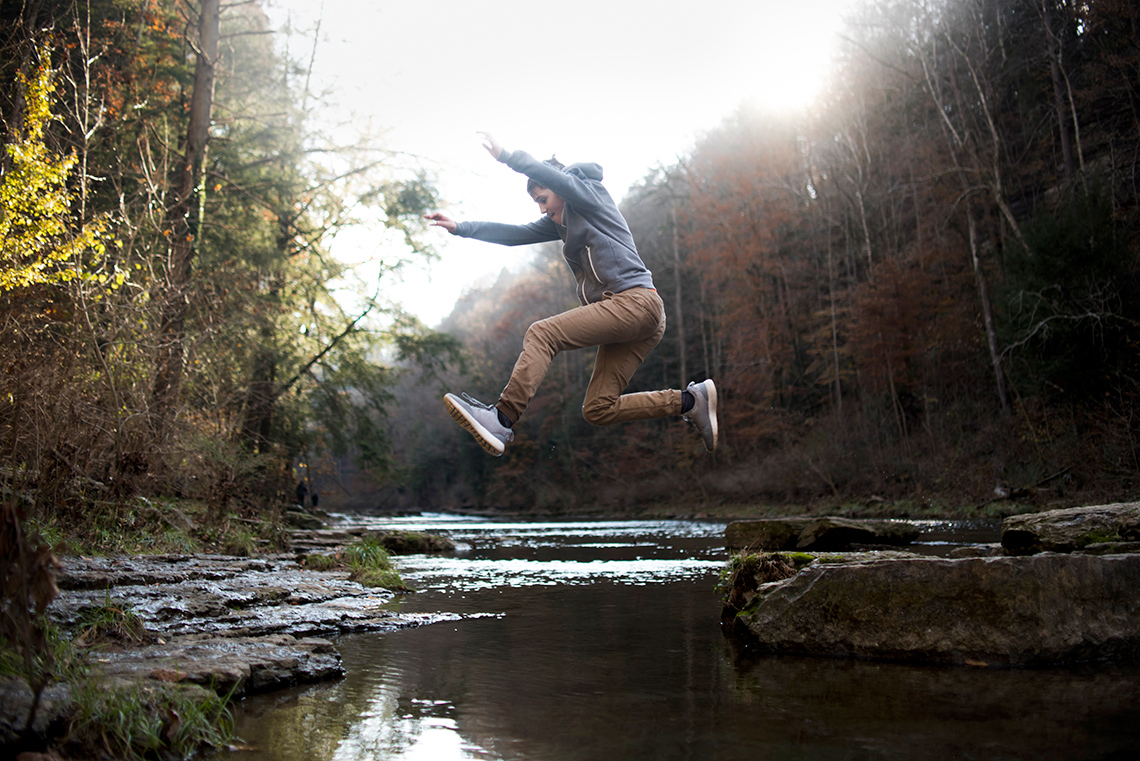
You will now explore the steps of a jump that, when used, will help you to jump farther.
Press the following tabs to access steps to complete a jump for distance.
Bend your knees, lean forward, and swing your arms back.
Swing your arms up and forward as you spring with your legs, reaching as high and far as possible and extending your body fully.
Look forward and tuck your legs as you “fly.”
Absorb your landing softly by bending your ankles, knees, and hips on impact. Your arms should reach straight forward for balance.
Check out this video to learn more about the four stages of a jump.
Try It
Horizontal jump challenge
Leave your rope or marker where it is on the ground. Begin at one end of the rope with your toes almost touching it. See how far you can jump over the rope. If possible, have someone measure your distance or measure it yourself.
Jump three times and record your distance for each jump.
To record how far you jumped, complete the Horizontal Jump Challenge in your notebook or using the following fillable and printable document. If you would like, you can use speech-to-text or audio recording tools to record your thoughts.
|
Jump #1 |
Distance: |
|
Jump #2 |
Distance: |
|
Jump #3 |
Distance: |
Press the ‘Activity’ button to access Horizontal Jump Challenge.
Hopping

Hopping means jumping with one foot and landing on the same foot.
Here are some key steps to performing a hop:
- Begin with your feet close together.
- Choose your dominant leg as your hopping foot.
- Lift the opposite foot up so that your knee is bent and your leg is angled back at 90 degrees. You can hold the foot of this leg for balance.
- Swing your arms, bend your knee, and lift off with your dominant leg.
- Try to land on the ball of your foot.
Explore the following video to learn more about hopping.
Follow the leader
For this activity, you will follow a series of different instructions as they are explained by the e-reader. Once you are ready to begin, access the e-reader and follow along with the instructions.
Skipping
Skipping is a rhythmical combination of two skills: the step and the hop. Skipping is a step and a hop on one foot, followed by a step and a hop on the other foot.

Here are some key steps to skipping:
- Step forward and hop on the same foot.
- Repeat on the other foot, putting your right foot down, and then your left foot up. Repeat again.
- You will also move your arms opposite to your legs.
- Try to bring your knees up high, and when you land, land with your toes and on the balls of your feet.
Check out the following video to learn more about skipping.
Try It
Island hopping
For this activity, you may set up spots around your activity space that will be your “islands.” Practise your skipping by moving from each island.
Jump, hop, or skip
Now that we’ve explored how to jump, hop, and skip, let’s review each action with the activity below.
For each term, select the corresponding definition.
Let's slow down
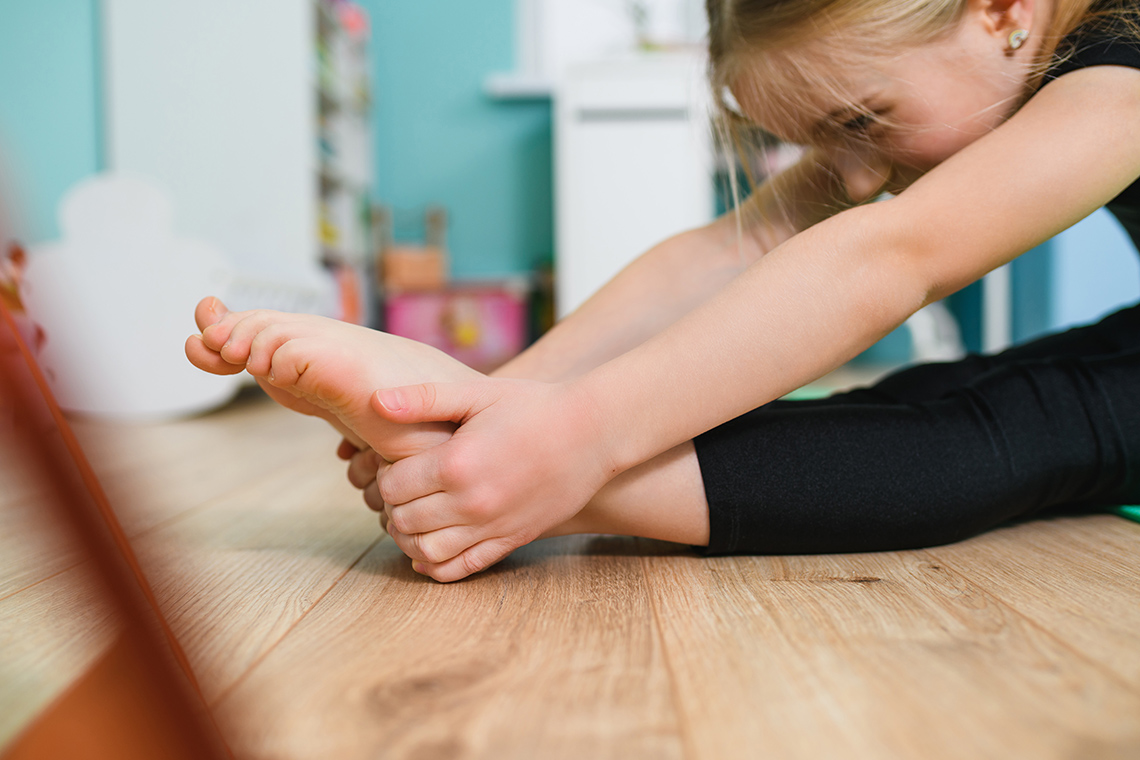
Before you pause and reflect on what you have learned, we need to cool down from our exercise.
Cool Down
Cool down
It’s time to rest our bodies. Cooling down is an important step that helps to lower our heart rates. Take slow, deep breathes during your cool down activity.
Stretch it out
The next video explores a cool down activity. These are the steps of this cool down:
- Sit in a comfortable space. If possible, bring your feet together so that your soles touch.
- Breathe in and exhale slowly. Repeat this as many times as you’d like.
- When you’re ready, stretch both arms above your head.
- Slowly bend down at the waist and touch your toes, if possible.
- Repeat these steps as many times as you’d like to complete your cool down activity.
Access the video to help you learn how to do a cool down.
Consolidation
Making an obstacle course

You will now put all that you have learned together to create an obstacle course for another person to complete!
The person completing your course must use the skills of hopping, skipping, and jumping to reach the end. You can put obstacles in their way to jump over and you can decide which route they have to take to complete your course.
Safety tip
Be mindful that the obstacles you choose are safe to include in your course!
In your instructions, include tips on how to hop, skip, and jump in your own words.
Use the following checklist to design your obstacle course.
Obstacle course requirements
Explore the following example of an obstacle course.

This is a five-by-five square grid which illustrates an obstacle course. The grid's legend uses letters for movements and images for obstacles. The movements are: 'J' for jump, 'H' for hop, 'S' for skip. For obstacles, a stack of pillows for pillows, a teddy bear for a stuffed animal, and a cardboard box for box. On the grid, 'Start' is labelled in the top left corner and 'Finish' in the bottom right corner square. A set of arrows between the squares show the flow of movement through the grid.
The obstacle course reads as follows: Start, move towards the right with H, J, J, and H. Then, move one square down with J, move towards the left over the pillows, J, over the pillows, then S. Next, one square down, S, and another square down to J. Then, move towards the right over the box, J, then over the stuffed animal, S, and one square down towards the Finish square."
Draw or create your obstacle course using a method of your choice. You may also complete the Obstacle Course Planner in your notebook or using the following fillable and printable document. If you would like, you can use speech-to-text or audio recording tools to record your thoughts.
Press the ‘Activity’ button to access Obstacle Course Planner.
Try It
Obstacle challenge
When you have completed the planning of your obstacle course, if possible, have another person test it out. Perform the obstacle course yourself and observe how long it takes you to complete!
Reflection
As you read through these descriptions, which sentence best describes how you are feeling about your understanding of this learning activity? Press the button that is beside this sentence.
I feel…
Now, record your ideas using a voice recorder, speech-to-text, or writing tool.

